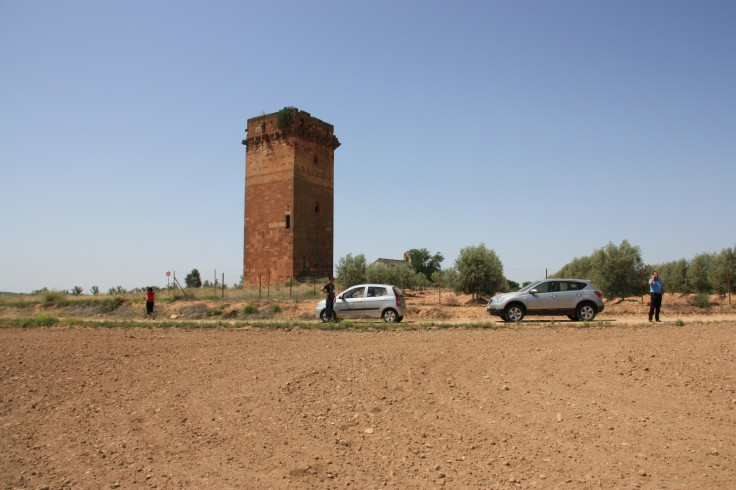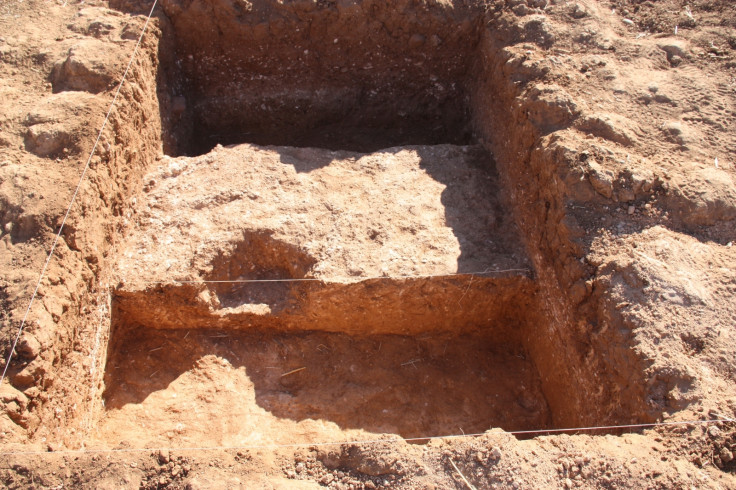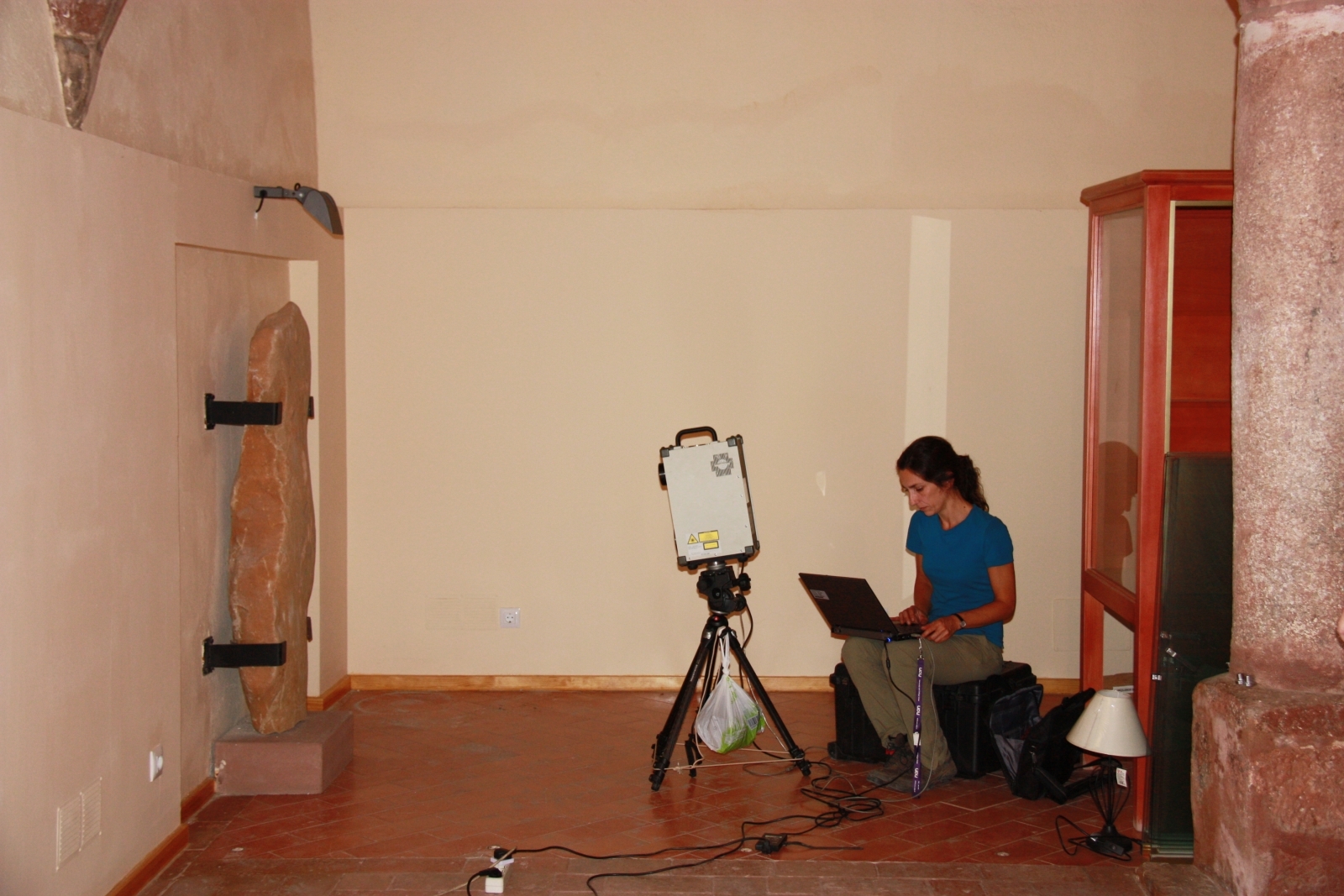Mysterious stone slab discovered in Spain is covered with ancient symbols that no one can read
Who carved the symbols and what were they trying to say?
At 1.5m high and 85cm wide, the stela of Montoro is an imposing artefact. It is a stone slab covered in engravings thought to date from the Iron Age. The symbols themselves are all more or less recognisable as letters from extinct languages. But no one can read what the symbols say.
Archaeologist Leonardo García Sanjuán of the University of Seville began studying the stela after reading a short notice on the discovery published in the Montoro Archaeological Museum newsletter. He could see that there was something unusual about it, and went out to see it with his colleague Marta Díaz-Guardamino at Southampton University in the UK.
The slab had first been unearthed by a farmer ploughing his field in Montoro in southern Spain in 2002. He dumped it in a heap of other stones at the side of the field and thought nothing more about it. Two years later, a couple of rangers from the regional government's environmental department discovered it and noticed a series of strange markings covering one of its sides.
The rangers took it to the local museum, where it stayed more or less undisturbed for eight years until García Sanjuán and Díaz-Guardamino came to visit in 2012. They were puzzled to find that the letters – or graphemes – just didn't make any sense.
"It's rare to find something like this – the inscriptions on this stela cannot be read. There isn't a single script that makes sense of them," García Sanjuán told IBTimes UK.
The majority of the symbols were easily identifiable, as they had been taken from a range of different languages. On top of this, some were arranged in a circular or spiral pattern while others were carved in no discernible order.
"They seem to be an assorted collection of graphemes taken from different scripts and put together on this stone," García Sanjuán said.
Deciphering the indecipherable
So what does this strange collection of graphemes mean? To answer this, one of the key problems was first finding out how old they were. This could give the archaeologists some clue about the cultural context in which they were written.
Straight away, the team came up against difficulties. The farmer whose field the stone came from wasn't keen to let the archaeologists start digging up parts of his land to find other contemporary artefacts they could use to estimate the stela's age.

"He had only given us permission to excavate one small pit. We were not very lucky, and did not find any dating material there. So now we have to go by indirect evidence," García Sanjuán said.
The writing includes elements of a north-eastern palaeo-Hispanic script, Graeco-Iberian script, Proto-Sinaitic and Proto-Canaanite inscriptions, epigraphic South Arabian and Phoenician scripts. People from these cultures were all more or less active in the Iberian Peninsula during the Iron Age. The engravings are estimated to have been made between the 9th and the end of the 3rd century BCE.
The stone is remarkable for these peculiar inscriptions, said John Koch, a Celtic language and literature researcher at the University of Wales who was not involved in the research.
"There are a lot of stelae but none of them are like this. You've got these Bronze Age ones that don't have writing on them, and that have pictures of warriors and weapons instead. Then centuries later you've got ones with writing on them - strings of signs in order, sometimes with a line below and above them as well," Koch said.
"But this is completely different. In terms of arrangement it looks like the old warrior stelae. But it has letters and some look like the later ones that have real writing on them."
This stone could fill an important gap in the cultural shift from the earlier pictoral carvings to the later written inscriptions. But even so, it's still not clear how the stela came to be made. Thinking about what was going on in Spain in this period led García Sanjuán and Díaz-Guardamino to two potential hypotheses about the its origin.

Illiterate locals or armies on the move?
The first hypothesis was that the stela was engraved in the early Iron Age, between the 9th and 5th centuries BCE.
"What we have here perhaps would be local people – who were very probably illiterate people – replicating on a stone the signs that they have seen of or been told about, which they probably did not understand," García Sanjuán said. "This would reflect very early contact between local people and people from outside Iberia – most likely Phoenicians coming from the eastern Mediterranean."
The other option is that the markings were made a few hundred years after this in the late Iron Age, between the 5th and 3rd centuries BCE. This was a time when the Roman Empire was expanding. The Romans defeated the Carthaginians in the second Punic war, and imperialism began to spread across Iberia.
"If you think for a moment – in the 3rd century BCE, southern Spain was a very busy part of Europe. The Carthaginians had a very powerful kingdom," García Sanjuán said.
The family of the well-known Carthaginian general Hannibal – the Barcas – became established in Iberia around this time with grand expansionist strategies. They wanted to control Iberia and to exploit the iron, gold and silver they expected to find there. But in doing so they upset allies of Rome, and Rome declared war on the Carthaginians in retaliation.

"At that time there were very big armies with thousands of people marching across Iberia. The Romans and the Carthaginians had many foreigners in their armies who were paid to fight for them."
These people had very different ethnic backgrounds. The stone could in some sense be a mark of the diversity of some long-forgotten military unit, or it celebrates the diversity of people fighting together in an army.
The former hypothesis – that of the illiterate locals who were imitating writing – would be the much more exciting one if it is true, said Koch.
"These people could be trying to write something, but I don't think they succeeded. It looks more like they're getting the idea that these stelae should have letters on them. That's part of the status that writing brings," Koch said. "So this could be a way of competing culturally with literate people. They haven't quite found the way to adapt the writing to their languages yet, but they seem to be trying."
But at this stage, with no additional evidence to put the stela in context, these hypotheses remain somewhat speculative. Until more artefacts are found, its true origin can only be imagined. But one thing remains certain – the stela is an exceptional find, and it was made in exceptional circumstances.
"It's a very special stone. Somebody took the trouble of carving it with all these motifs and placing it somewhere. It must have been very important to the people who made it," García Sanjuán said.
The research is published in the journal Antiquity.




© Copyright IBTimes 2025. All rights reserved.






















